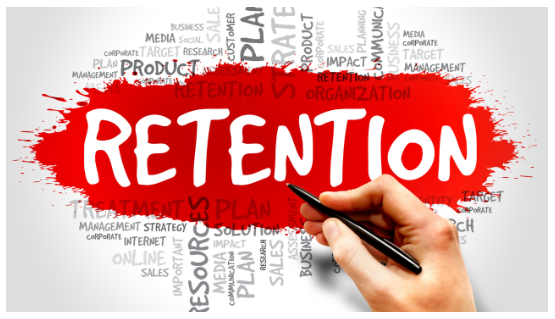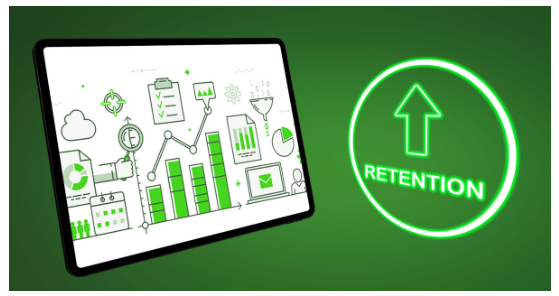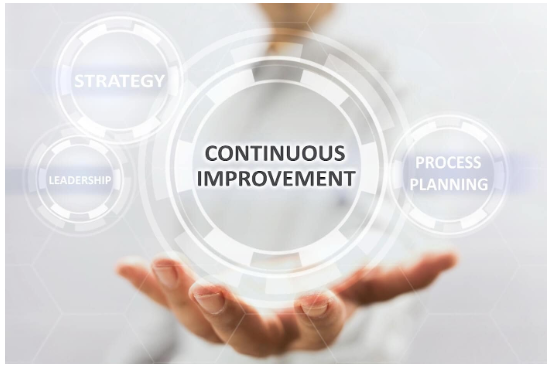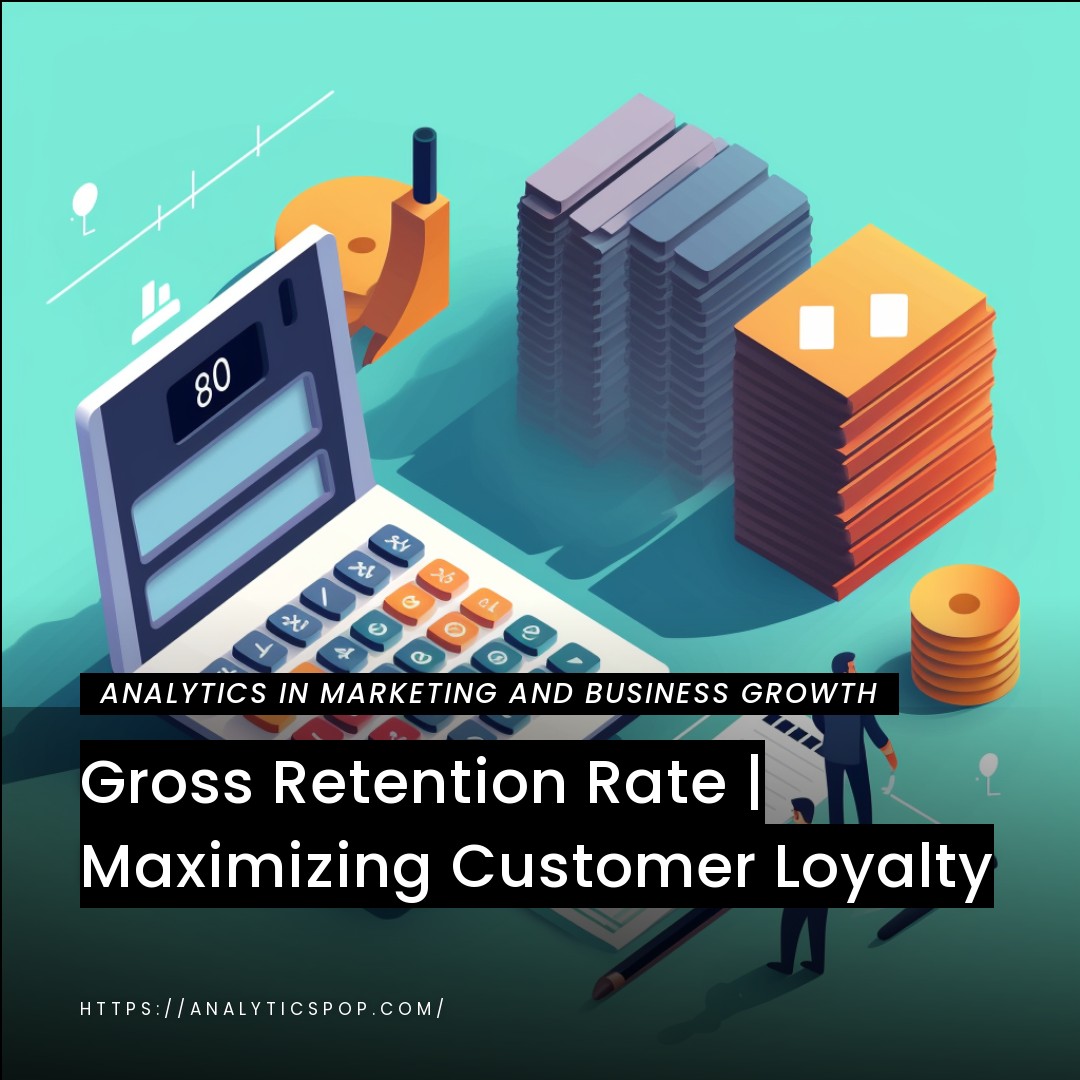Unleashing Customer Loyalty: Maximizing Gross Retention Rate for Business Success
Unleashing customer loyalty is crucial to maximizing the gross retention rate for long-term business success. Businesses can effectively retain their existing customers by nurturing strong customer relationships and creating an exceptional customer experience. According to a recent study, increasing customer retention by just 5% can lead to a profit increase of 25% to 95%.
To achieve this, businesses must focus on delivering outstanding service at every touchpoint. This includes personalized interactions, timely support, and proactive problem-solving. By analyzing customer data and leveraging customer relationship management (CRM) tools, companies can gain insights into individual preferences and behavior patterns, allowing them to tailor their offerings and communication.
Implementing a loyalty program is another effective strategy. By offering exclusive rewards, discounts, and personalized incentives, businesses can encourage repeat purchases and strengthen customer loyalty. Statistics show that customers enrolled in loyalty programs spend 12-18% more than non-members.
Furthermore, businesses should actively seek customer feedback and use it to drive continuous improvement. Conducting surveys, monitoring social media mentions, and responding promptly to customer reviews are vital in maintaining a positive brand image and addressing any issues.
By prioritizing customer loyalty through exceptional service, personalized experiences, loyalty programs, and continuous improvement, businesses can maximize their gross retention rate, foster long-term customer relationships, and achieve sustainable success in today’s competitive marketplace.
Understanding Gross Retention Rate
Understanding the gross retention rate is essential for businesses to gauge customer loyalty and measure their ability to retain existing customers over time.
The gross retention rate is calculated by dividing the number of customers at the end of a specific period by the number of customers at the beginning, expressed as a percentage.
For example, if a company starts with 1,000 customers and ends the period with 800 customers, the gross retention rate would be 80%. A higher gross retention rate indicates better customer retention and loyalty.
Monitoring and analyzing the gross retention rate is crucial as it directly impacts the company’s revenue and profitability. It is more cost-effective to retain existing customers than to acquire new ones. According to studies, increasing customer retention by just 5% can boost profits by 25% to 95%.
Companies can enhance loyalty and increase their chances of retaining customers by actively engaging with customers, addressing their needs, and consistently exceeding their expectations. To improve the gross retention rate, businesses must focus on providing exceptional customer experiences. This involves delivering high-quality products or services, offering personalized solutions, and ensuring timely and efficient customer support.
Additionally, businesses can leverage data and analytics to gain insights into customer behavior, preferences, and patterns. This information can help identify areas for improvement, personalize marketing campaigns, and develop targeted retention strategies. By proactively understanding and addressing customer needs, businesses can enhance their gross retention rate and drive long-term success.
The gross retention rate is a vital metric that reflects a business’s ability to retain customers over time. By prioritizing exceptional customer experiences, utilizing data-driven insights, and implementing targeted retention strategies, companies can boost their gross retention rate, foster customer loyalty, and thrive in today’s competitive landscape.

Definition and Significance of Gross Retention Rate
The gross retention rate refers to the percentage of customers a business successfully retains over a specific period without factoring in new customer acquisitions. It measures customer loyalty and reflects the effectiveness of a company’s efforts in keeping existing customers engaged and satisfied.
The significance of the gross retention rate lies in its ability to provide insights into a business’s stability and growth potential. A high gross retention rate indicates that a company successfully maintains customer loyalty, which has several advantages:
- Revenue Stability: Retaining existing customers ensures a steady revenue stream. Loyal customers are more likely to make repeat purchases, resulting in consistent sales and revenue for the business.
- Cost Efficiency: Acquiring new customers can be expensive due to marketing and advertising expenses. By focusing on retaining existing customers, businesses can reduce customer acquisition costs and allocate resources more effectively.
- Customer Lifetime Value: Customers loyal to a brand have higher lifetime value (CLV). CLV represents the total revenue a business can expect from a customer throughout its relationship. A higher gross retention rate contributes to a higher CLV, increasing profitability.
- Positive Word-of-Mouth: Loyal customers are likelier to recommend a brand to others, leading to positive word-of-mouth marketing. This can attract new customers and further contribute to business growth.
- Competitive Advantage: A high gross retention rate can give a business a competitive edge. Satisfied customers are less likely to switch to competitors, strengthening the company’s market position and reducing the risk of market share erosion.
Monitoring and improving the gross retention rate is essential for businesses. It involves understanding customer needs, providing exceptional customer experiences, personalized communication, proactive customer support, and continuously evolving products or services to meet changing customer expectations. By focusing on customer retention, businesses can foster long-term relationships, drive sustainable growth, and outperform their competitors in the market.
The Importance of Gross Retention Rate in Business
The gross retention rate holds significant importance in business for several reasons:
- Revenue Stability: Maintaining a high gross retention rate ensures a stable revenue stream. By retaining existing customers, businesses can rely on repeat purchases and ongoing engagement, reducing revenue fluctuations and creating a solid foundation for financial stability.
- Cost Efficiency: Acquiring new customers typically requires more resources and marketing investments than retaining existing ones. A higher gross retention rate reduces the need for extensive customer acquisition efforts, allowing businesses to allocate resources more efficiently and improve their bottom line.
- Customer Lifetime Value (CLV): The gross retention rate directly impacts the customer lifetime value. Loyal customers tend to have longer relationships with a business, resulting in increased CLV. By maximizing the retention rate, companies can enhance the overall profitability and potential return on investment from each customer.
- Competitive Advantage: A high gross retention rate can provide a competitive edge in the market. Satisfied customers who remain loyal are less likely to be enticed by competitors. This advantage can help businesses maintain or expand their market share, reducing the risk of losing customers to rivals.
- Brand Advocacy and Referrals: Loyal customers are likelier to become brand advocates, spreading positive word-of-mouth and referring new customers. A robust gross retention rate can lead to a network effect, where satisfied customers actively promote the business, attracting new prospects and further fueling growth.
- Customer Satisfaction and Relationship Building: A focus on gross retention rate highlights the importance of customer satisfaction and relationship building. By consistently meeting and exceeding customer expectations, businesses can forge stronger connections, deepen loyalty, and create a positive brand reputation.
- Long-Term Growth and Expansion: A high gross retention rate reflects successful customer retention strategies. This retention directly contributes to sustainable business growth, providing a solid customer base to expand products, services, and market reach.
The gross retention rate is vital for businesses as it impacts revenue stability, cost efficiency, customer lifetime value, competitive advantage, brand advocacy, customer satisfaction, and long-term growth. By prioritizing customer retention, companies can build stronger relationships, drive profitability, and thrive in a highly competitive marketplace.

Strategies to Maximize Gross Retention Rate
Businesses can employ various effective strategies to maximize the gross retention rate and enhance customer loyalty. Here are some critical approaches:
- Personalized Customer Experiences: Tailor interactions and offerings to meet individual customer needs. Utilize customer data and analytics to understand preferences, purchase history, and behavior, allowing personalized recommendations, targeted marketing campaigns, and proactive customer support.
- Exceptional Customer Service: Provide outstanding customer service at every touchpoint. Respond promptly to inquiries, concerns, and feedback. Train customer support teams to be knowledgeable, empathetic, and proactive in resolving issues. Businesses can foster trust and loyalty.
- Loyalty Programs and Incentives: Implement loyalty programs that offer exclusive rewards, discounts, and incentives for repeat purchases. Monitor program data to identify opportunities for personalized offers and targeted promotions. By rewarding customers for their loyalty, businesses encourage them to stay engaged and continue their relationship.
- Continuous Communication and Engagement: Maintain regular communication with customers through multiple channels such as email newsletters, social media, and personalized updates. Provide valuable content, product information, and special offers to keep customers engaged and connected to the brand.
- Proactive Customer Feedback and Surveys: Actively seek customer feedback to understand their satisfaction levels, preferences, and areas for improvement. Conduct regular surveys, and monitor online reviews and social media mentions to gain insights and address issues promptly. Engaging customers in feedback makes them feel valued and strengthens the relationship.
- Value-Added Services and Upgrades: Continuously evaluate and enhance the value proposition by introducing new features, services, or upgrades. Regularly communicate these enhancements to existing customers, emphasizing the benefits they will receive. This approach retains current customers and encourages them to explore additional offerings.
- Customer Success and Onboarding Programs: Provide onboarding programs and customer success initiatives to guide new customers through the initial stages of their journey. Offer training, tutorials, and ongoing support to ensure customers achieve success with the product or service. By helping customers realize the total value of their purchase, businesses increase the likelihood of long-term retention.
- Data-driven Insights and Predictive Analytics: Leverage data and analytics to gain insights into customer behavior, preferences, and patterns. Use predictive analytics to anticipate customer needs, identify potential churn risks, and take proactive measures to retain customers before they consider leaving.
By implementing these strategies, businesses can significantly improve their gross retention rate, strengthen customer loyalty, and foster long-term relationships. Remember that consistent effort, a customer-centric approach, and continuous improvement are vital to customer retention.
Delivering Exceptional Customer Experience
Delivering exceptional customer experiences is paramount for businesses that maximize customer satisfaction and retention. Here are some key strategies to achieve this:
- Understand Customer Needs: Gain a deep understanding of your customers by conducting market research, analyzing customer data, and engaging in direct conversations. This knowledge helps tailor products, services, and experiences to meet their needs and preferences.
- Personalization: Utilize customer data to personalize interactions and offerings. Address customers by name, recommend relevant products based on their purchase history, and provide personalized communication through targeted emails or customized website content. This creates a sense of individualized attention and enhances the customer experience.
- Seamless Omnichannel Experience: Ensure a seamless experience across various channels and touchpoints, such as websites, mobile apps, social media, and physical stores (if applicable). Enable customers to transition effortlessly between channels, maintaining consistent branding, information, and service quality throughout their journey.
- Proactive Customer Support: Anticipated customer needs and provided bold support. Implement live chat, chatbots, or self-service knowledge bases to offer immediate assistance. Monitor social media channels to address customer queries or concerns promptly. Businesses can exceed customer expectations and build trust.
- Empowered and Knowledgeable Staff: Train and empower employees to deliver exceptional customer service. Provide them with comprehensive product knowledge, communication skills, and problem-solving abilities. Encourage a customer-centric culture where employees prioritize the customer’s needs and strive to exceed expectations.
- Efficient Issue Resolution: Streamline the process of resolving customer issues or complaints. Implement efficient ticketing systems, track customer inquiries, and ensure prompt resolution. Communicate transparently with customers, keeping them informed about the progress and outcome of their requests.
- Continuous Feedback and Improvement: Actively seek customer feedback through surveys, feedback forms, or online reviews. Analyze this feedback to identify areas for improvement and take actionable steps to address customer concerns. Demonstrating a commitment to continuous improvement shows customers that their voices are heard and valued.
- Anticipate and Exceed Expectations: Go the extra mile to surprise and delight customers. Offer unexpected benefits, discounts, or personalized rewards. Anticipate their needs and proactively provide solutions or recommendations.
- Consistency and Reliability: Consistently deliver high-quality products, services, and experiences. Maintain reliability in terms of timely delivery, accurate information, and consistent service standards. Reliability builds trust and assures customers that they can count on your business.
By focusing on these strategies, businesses can differentiate themselves by delivering exceptional customer experiences. Such experiences increase customer satisfaction, loyalty, and positive word-of-mouth, ultimately contributing to long-term success in the marketplace.

Personalization and Relationship Building
Personalization and relationship building are essential business strategies to create strong customer connections. By tailoring experiences and fostering meaningful relationships, companies can enhance customer satisfaction, loyalty, and long-term engagement. Here’s how to leverage personalization and relationship-building effectively:
- Customer Data Utilization: Collect and analyze customer data to gain insights into preferences, purchase history, demographics, and behavior. Use this information to personalize interactions, recommend relevant products or services, and deliver targeted marketing campaigns.
- Customized Communication: Address customers by name and use personalized messaging across various touchpoints. Segment your customer base and tailor communication to specific groups based on their preferences and interests. This customized approach makes customers feel valued and understood.
- Proactive Engagement: Anticipate customer needs and proactively engage with them. Demonstrate that you understand their requirements and are dedicated to meeting them. Send personalized recommendations, offer bold support, and provide relevant information that adds value to their experience.
- Loyalty Programs: Implement loyalty programs that reward customers for their continued support. Offer exclusive perks, discounts, or personalized incentives based on their loyalty and purchase history. By acknowledging and appreciating their loyalty, businesses can strengthen relationships and encourage repeat business.
- Thoughtful Follow-ups: Follow up with customers after their purchases or interactions. Send personalized thank-you messages, gather feedback, or offer additional assistance. These gestures show that you value their business and are committed to their satisfaction.
- Two-Way Communication: Encourage open and transparent communication with customers. Actively listen to their feedback, concerns, and suggestions. Respond promptly and authentically, demonstrating that you genuinely care about their opinions and are committed to addressing their needs.
- Relationship Building Events: Organize events or initiatives that allow customers to interact with your brand and each other. This could include exclusive workshops, webinars, or community forums where customers can share experiences and insights. These events foster a sense of belonging and community, strengthening customer relationships.
- Personalized Customer Support: Provide customized customer support experiences. Train support staff to understand individual customer needs and preferences. Tailor support interactions to address specific concerns and go the extra mile to resolve issues promptly.
- Continuous Relationship Nurturing: Maintain regular customer communication beyond individual transactions. Keep them informed about relevant updates, new offerings, or personalized recommendations. Use various channels such as email, social media, or newsletters to nurture the relationship over time.
Businesses can create a customer-centric approach that fosters loyalty, advocacy, and sustainable growth by prioritizing personalization and relationship building. Building strong customer connections leads to enhanced satisfaction, increased customer lifetime value, and a competitive advantage in the market.
Proactive Customer Support and Engagement
Proactive customer support and engagement are crucial for businesses to provide exceptional service and nurture strong customer relationships. Companies can enhance satisfaction, loyalty, and overall customer experience by taking the initiative and anticipating customer needs. Here are some effective strategies for proactive customer support and engagement:
- Knowledge Base and Self-Service: Create a comprehensive knowledge base or self-service portal that answers common customer queries, troubleshooting guides, and step-by-step tutorials. Empower customers to find solutions independently, saving time and effort for both parties.
- Proactive Notifications and Updates: Keep customers informed about relevant updates, new features, or upcoming promotions. Send proactive notifications via email, SMS, or mobile apps to share valuable information and maintain engagement.
- Predictive Analytics and Recommendations: Leverage predictive analytics to anticipate customer needs and preferences. Proactively offer relevant products or services that align with their interests. Provide personalized recommendations based on their purchase history, browsing behavior, or demographic information.
- Live Chat and Chatbots: Implement live chat or chatbot functionality on your website or mobile app to provide instant support. Proactively assist customers who need help navigating your platform, making a purchase, or resolving issues. Chatbots can handle common inquiries, while live chat agents can investigate more complex matters.
- Social Media Monitoring and Engagement: Monitor social media channels to identify customer mentions, inquiries, or feedback. Engage with customers in real time, respond promptly to their messages or comments, and provide personalized assistance. This demonstrates your commitment to customer satisfaction and shows you’re listening and addressing their concerns.
- Customer Feedback Surveys: Conduct regular customer feedback surveys to gather insights and identify areas for improvement. Ask specific questions about their experience, suggestions for enhancement, or any challenges they may have encountered. Act on feedback to continuously refine your products, services, and customer support processes.
- Customer Success Programs: Establish customer success programs to ensure customers achieve their desired outcomes with your products or services. Assign dedicated customer success managers who can proactively engage with customers, understand their goals, and offer guidance and support throughout their journey.
- Proactive Issue Resolution: Monitor customer interactions and identify potential issues before they escalate. Proactively reach out to customers who have encountered challenges or expressed dissatisfaction. Offer solutions, apologize for any inconvenience caused, and take swift action to resolve their problems.
- Personalized Follow-ups: Follow up with customers after support interactions or purchases to ensure their satisfaction. Personalize the follow-up communication, express gratitude for their business, and check if they require any further assistance. This gesture demonstrates that you genuinely care about their experience and want to meet their needs.
By adopting these strategies, businesses can provide proactive customer support and engagement, increasing customer satisfaction, loyalty, and advocacy. Proactively addressing customer needs and exceeding expectations fosters long-term relationships and positions your business as a trusted and customer-centric brand.

Analyzing and Improving Gross Retention Rate
Analyzing and improving the gross retention rate requires a systematic approach and a deep understanding of customer behavior and preferences. Here are some steps to effectively diagnose and enhance your gross retention rate:
- Data Collection and Segmentation: Collect relevant customer data, including purchase history, demographics, engagement metrics, and churn indicators. Segment your customer base based on lifetime value, product usage, or behavior patterns. This segmentation enables a more focused analysis and targeted retention strategies.
- Churn Analysis: Identify why customers churn or discontinue their relationship with your business. Analyze customer feedback, conduct exit surveys, and examine patterns in churn data. This analysis helps pinpoint common pain points or areas for improvement, allowing you to take proactive measures to address those issues.
- Customer Journey Mapping: Identify critical touchpoints and interactions and map the customer journey. This mapping helps uncover opportunities to enhance the customer journey and improve retention. Assess the quality of the customer experience at each stage and identify any potential gaps or areas where customers may face challenges.
- Root Cause Analysis: Dive deeper into the data and conduct a root cause analysis to identify the underlying factors contributing to churn or low retention. Look for patterns, trends, or correlations that may reveal common reasons for customer attrition. This analysis helps prioritize efforts toward resolving critical issues and implementing practical solutions.
- Customer Feedback and Surveys: Regularly collect customer feedback through surveys, interviews, or focus groups. Gather insights into customer satisfaction, preferences, and areas for improvement. Act on this feedback by addressing concerns, making necessary adjustments, and communicating progress to customers.
- Personalization and Customer Engagement: Leverage personalization strategies to strengthen customer relationships and enhance engagement. Use customer data to deliver personalized recommendations, targeted marketing campaigns, and tailored communications. Engage customers through multiple channels, including email, social media, and customized offers, to keep them actively involved with your brand.
- Continuous Improvement and Iterative Testing: Implement a culture of constant improvement by regularly testing and optimizing your retention strategies. A/B tests different approaches, offers, or messaging to identify what resonates best with your customers. Monitor the results, learn from successes and failures, and refine your strategies accordingly.
- Customer Success Programs: Develop customer success programs to ensure customers achieve their desired outcomes and maximize the value they derive from your products or services. A focus on customer success helps foster loyalty and drives retention. Provide proactive support, offer resources and training, and regularly assess customer progress towards their goals.
- Competitive Analysis: Analyze your competitors’ offerings and strategies to identify areas where you can differentiate and provide additional value. Identify and use the unique selling points that set your business apart to reinforce customer loyalty.
By consistently analyzing your gross retention rate and taking strategic actions to address areas of improvement, you can enhance customer satisfaction, strengthen loyalty, and increase your overall retention rate. Regularly monitor the results of your initiatives, adapt to evolving customer needs, and continuously refine your approach to achieve long-term success.
Tracking and Measuring Gross Retention Rate
Tracking and measuring the gross retention rate involves gathering data and analyzing key metrics to evaluate the effectiveness of your customer retention efforts. Here’s how you can track and measure your gross retention rate:
- Define the Time Period: Determine the specific time period you want to analyze for measuring the gross retention rate. Depending on your business goals and industry, it could be a month, quarter, or year.
- Collect Customer Data: To calculate the gross retention rate, gather customer data. This includes the number of customers at the beginning (starting count) and the end of the period (ending count).
- Exclude New Customer Acquisitions: To accurately calculate the gross retention rate, exclude any new customers acquired during the defined period. Focus solely on retaining existing customers for a meaningful evaluation.
- Calculate the Gross Retention Rate: Divide the number of customers at the end of the period by the number of customers at the beginning. Multiply the result by 100 to express it as a percentage. The formula is (Ending Count / Starting Count) * 100 = Gross Retention Rate.
- Analyze Retention Rate Trends: Track the gross retention rate over time to identify trends and patterns. Monitor how the rate fluctuates from one period to another, and compare it against previous periods to assess progress or areas for improvement.
- Segment the Retention Rate: Analyze the gross retention rate by customer segments, such as demographics, purchase behavior, or product usage. This helps identify variations in retention rates among different customer groups, allowing you to tailor retention strategies accordingly.
- Customer Churn Analysis: Calculate and analyze the customer churn rate, representing the percentage of customers lost during the period. Understanding why customers churn and identifying trends can provide insights into retention factors.
- Customer Lifetime Value (CLV): Assess the relationship between the gross retention rate and customer lifetime value. Determine how the retention rate influences the overall value customers bring to your business and how it impacts revenue and profitability.
- Benchmark Against Industry Standards: To gauge your performance, compare your gross retention rate with industry benchmarks or competitors. This benchmarking provides context and helps identify opportunities for improvement.
- Track Customer Feedback and Satisfaction: Monitor customer feedback, satisfaction scores, and Net Promoter Score (NPS) to gain qualitative insights alongside the quantitative metrics. Understanding customer sentiment and gathering feedback helps identify areas for improvement and informs retention strategies.
Regularly track and measure your gross retention rate, conduct in-depth analyses, and use the insights gained to refine your customer retention strategies. Continuously monitor the effectiveness of your initiatives and make data-driven adjustments to optimize your retention efforts over time.

Customer Feedback and Continuous Improvement
Customer feedback is a valuable resource that can drive continuous improvement in your business. By actively seeking and analyzing customer feedback, you gain insights into customer experiences, preferences, and pain points, allowing you to make data-driven decisions and enhance your offerings. Here are some steps to effectively leverage customer feedback for continuous improvement:
- Feedback Channels: Offer various channels for customers to provide feedback, such as online surveys, feedback forms on your website, email, social media, or dedicated customer support channels. Make it easy and convenient for customers to share their thoughts and experiences.
- Listen and Analyze: Regularly review and analyze customer feedback to identify recurring themes, trends, and areas for improvement. Look for patterns in positive feedback to understand what aspects of your business work well and leverage them further.
- Actionable Insights: Translate feedback into actionable insights. Identify specific areas where you can make improvements or address customer concerns. Categorize feedback into different themes or topics to prioritize and manage them effectively.
- Customer Journey Analysis: Map customer feedback to different journey stages. This analysis helps pinpoint areas where improvements can have the most significant impact on the customer experience. Identify touchpoints where customers express satisfaction or encounter challenges.
- Employee Engagement: Share customer feedback with your employees and involve them in the improvement process. Encourage a customer-centric culture and empower employees to contribute ideas for enhancing the customer experience based on feedback insights.
- Continuous Iteration: Implement a process for continuous improvement based on customer feedback. Iterate and refine your strategies based on customer feedback and ongoing evaluation. Regularly revisit feedback data, track progress on addressing customer concerns, and measure the impact of implemented changes.
- Communication and Transparency: Keep customers informed about your actions based on their feedback. Communicate updates, improvements, or new features resulting from their suggestions. This transparency shows that you value their input and demonstrates your commitment to their satisfaction.
- Customer Satisfaction Surveys: Conduct surveys to gauge overall satisfaction levels and track changes. Use metrics like Net Promoter Score (NPS) or Customer Satisfaction Score (CSAT) to quantify customer sentiment and identify areas for improvement.
- Test and Validate: Test and validate improvements or changes before fully implementing them. Pilot new features or enhancements with a subset of customers to gather feedback and ensure they align with customer expectations.
- Continuous Learning Culture: Foster a constant learning and improvement culture throughout your organization. Encourage employees to seek out and share customer feedback, participate in training programs, and contribute to customer-centric initiatives.
Incorporating customer feedback into your continuous improvement process demonstrates your commitment to customer satisfaction and fosters a customer-centric culture. Regularly evaluating and acting upon customer insights allows you to refine your products, services, and customer experiences, leading to increased customer loyalty and business growth.



